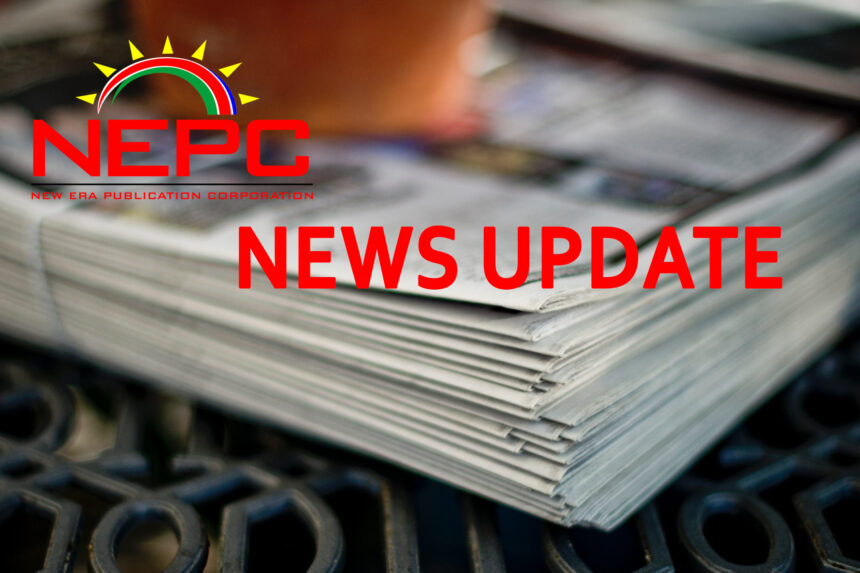Edgar Brandt
Agriculture, water and land reform minister Calle Schlettwein has issued a stern warning for any industrial action that could pollute or destroy Namibia’s scarce water resources.
The issue has come to the fore in recent weeks as agriculture players have expressed concern about an increase in the number of exclusive prospecting licenses (EPLs) being issued and mining prospectors wanting to gain access to agricultural land.
“An activity that would have the potential to destroy (through depletion or pollution) may not be allowed in my opinion,” said Schlettwein on Friday while speaking at the launch of Namibia’s updated hydrogeological map.
“Our stance is that water is the most valuable resource without which neither life nor livelihoods are possible, and we therefore need to be very careful in our considerations.”
According to the Namibia Agricultural Union (NAU), mining consultants or potential prospectors often act unreasonably in their dealings with landowners in terms of timelines and related issues.
As a result, the NAU started to closely monitor mining or industrial activities on agricultural land or those close to valuable water sources.
In a recent statement, the union stated that it was particularly concerned about a proposed uranium mine in the Leonardville area of the Omaheke region.
“Many of the landowners seemed unaware of the possible impact in-situ leaching associated with uranium mining could have on meat and food production, tourism possibilities and the availability of drinking water, to name but a few”, the NAU statement reads.
Schlettwein pointed out that Namibia is at the global forefront of several aspects in water utilisation and management, including the City of Windhoek whose water reclamation works was a world’s first, and which with the planned upgrading will remain ahead of the rest.
“We have started with artificial water recharge in aquifers that supply water to Windhoek. With such an approach, we can utilise surface water resources (dams that supply Windhoek with water) much more efficiently and improve the yields by reducing losses through evaporation. Furthermore, we are assured of full aquifers when surface water resources are depleted, and with that improve the security of water supply. We are leaders on the African continent in this regard,” the minister stated.
Schlettwein added that Namibians can pride themselves on outstanding water quality as water supplied to households adheres to international water quality standards, and can be consumed without any further treatment. “Indeed, this is a great achievement, and not found commonly on the African continent”.
The minister stressed that some 60% of the water used in Namibia comes from groundwater, and this sustains lives, livelihoods, industry and businesses.
“As a semi-arid country that is highly vulnerable to climate change and variability, evidence-based sustainable management of groundwater resources is a necessary condition as the country implements its socio-economic development agenda across generations,” he observed.
Namibia’s hydrogeological map and its accompanying handbook were first published in December 2001, with an unrevised second edition released 10 years later in 2011.
“As the custodian of groundwater resources in Namibia, the ministry saw it fit and timely to review and provide an update of these relevant and proven tools, which are widely used for groundwater management,” Schlettwein explained.
This review process included using the latest and most up-to-date geological and groundwater data and information available from recent groundwater projects and discoveries. Thus, as part of this new edition of the hydrogeological maps, the ministry used the latest technology to develop a digital application to make the hydrogeological map available to the public, institutions of research and higher learning as well as groundwater stakeholders.
ebrandt@nepc.com.na
Valuable date… An example of a hydrogeological map.
Photo: Contributed


